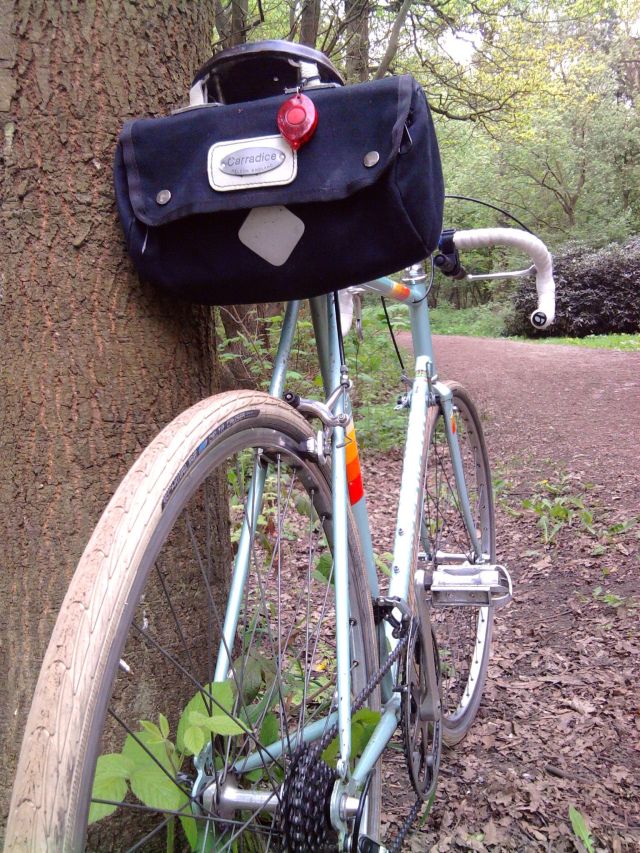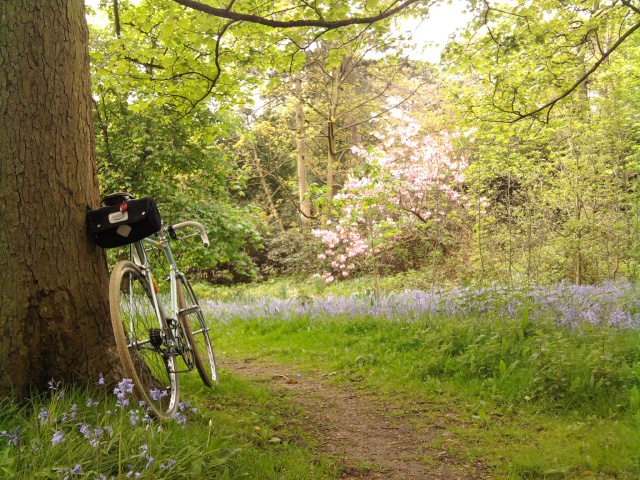To my mind, the main feature that makes the venerable ten speed bicycle a far more practical real world road bike than its modern descendent is tyre clearance. An average modern road bike will take accommodate a maximum tyre of around 25mm wide – some, more by luck that good jugdment, might squeeze in a 28mm, but only just.

Ever since acquiring my late eighties Peugeot ten speed, I’ve been keen to exploit its big tyre potential – I’m a firm believer in the dictum that states if you’re not racing, you should fit the plushest tyres that your frame will allow. Doing so will dramatically improve comfort, protect the bike and rider from road shock and open up new routes on more varied surfaces. With big tyres on your road bike, that enticing gravel road shortcut is suddenly a real option.

I was always aware that the clearances on the ten speed would allow plusher tyres than the 23mm gumwalls that it was specified with back in 1987. Indeed I’d been running 25mm Specialized All Conditions with 35mm fenders, with no issues at all. However, lately I began to think of bigger tyres, initially pondering a set of 28mm hoops – assuming that this would possibly be the biggest tyre that would fit comfortably.
It was then that I had the brainwave of seeing if my 35mm Schwalbe Delta Cruisers (in cream) would fit between the Peugeot’s slender stays. If nothing else, the experiment would set some outer limits on tyre size.

And so it came to pass – I was dubious yet hopeful as I uninstalled the fenders and removed the skinny 25mm tyres, before slipping the gorgeous cream Delta Cruisers onto the Weinmann rims. At this point, I was hoping against hope that they would work, purely on aesthetic grounds – the wide cream tyres looked amazing on the vintage polished aluminium rims and slender Maillard QR hubs – I would be gutted if they didn’t work.
With some trepidation, I slipped the rear wheel back between the dropouts, aligned it and snugged up the QR. So far so good, plenty of clearance at the brake bridge, between the stays and under the chainstay bridge too. However, the real test would come when the tyres were inflated to a working pressure. I attached the track pump and began to inflate – 30, 40, 45, 50 psi – and lo! still plenty of room (around 8mm each side and over 1cm beneath the bridge)! Praise the Lord! Fat tyre compatibility had been verified.
It was a similar story at the front end, with around 1cm clearance beneath the Weinmann 500 caliper (regarded as a ‘short reach’ brake in its day but now firmly in the ‘medium’ camp). OK, there’s no chance of fitting a fender now, but the benefits in terms of ride, practicality and looks are well worth the sacrifice.

My first proper ride on the newly shod bike was a revelation, made all the more pleasant by the UK’s currently sublime spring weather. My test ride location was Croxteth Country Park, my favourite destination for a local spin on the paths, gravel tracks and hardpack trails. Today the park was alive with families enjoying the Easter weekend. However I could still find that counterpoint of solitude in the park’s farthest reaches – at one point I seemed to be riding through a dreamscape – a secluded bluebell wood with blossom descending like snow from the branches above, the birds in full spring tune and the smell of wild garlic heavy in the air. Rolling along on the ultra plush 35mm tyred Peugeot in such a scene was a little slice of cycling heaven – the bike is still responsive, yet has an unstoppable, steamroller feel.
I think I may have unwittingly created a retro country bike – a quick, lively, sporty bike that will eat gravel roads all day long.
Anyone else out there created a budget country bike from a ten speed?
